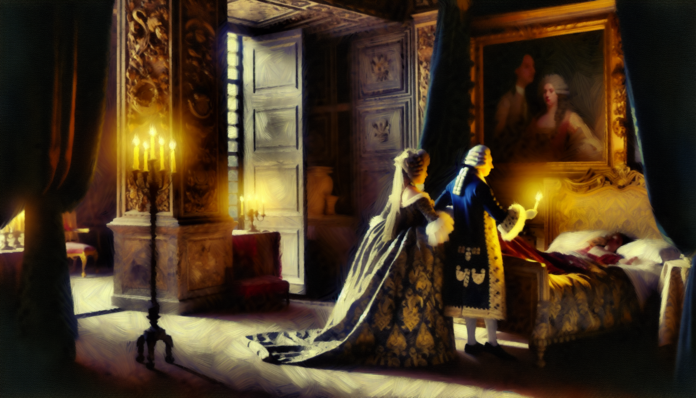The Royal Affair that Changed Everything
In the late 18th century, King Louis XVI of France, who is often remembered for his tragic fate during the French Revolution, was also the focus of scandalous whispers and intrigue regarding his marriage and romantic entanglements. At a time when France was grappling with profound economic crisis and rising revolutionary sentiments, tales of courtly passion reflected the societal norms and moral attitudes that shaped perceptions of love, power, and fidelity.
The Scandal: Louis XVI and Marie Antoinette
The marriage of Louis XVI and Marie Antoinette in 1770 was initially celebrated but quickly became a matter of public scrutiny. The couple was often subjected to extravagant gossip, especially concerning Marie Antoinette’s alleged infidelities. Rumors circulated regarding her flirtations with various members of the court, notably Count Axel von Fersen, a Swedish nobleman, whose close relationship with the Queen sparked particularly scandalous stories.
While no hard evidence published in sex tapes or explicit documents existed, pamphlets and broadsides—early forms of tabloids—full of sensational claims circulated widely. Public speculation was rife about intimate encounters that supposedly took place in secret rendezvous, with one pamphlet famously stating, “Queen of France gives herself to none; save those who can bring her glory.” These quotes, though likely exaggerations, highlighted the audacity with which the public viewed the royal couple’s private lives.
Key Events and Reactions
The turning point came in 1785 when the “Affair of the Diamond Necklace” scandal erupted. Although Marie Antoinette was not directly involved, she became embroiled in the fallout, serving as a convenient scapegoat for the discontent of the populace. A con artist, Jeanne de la Motte, tricked Cardinal de Rohan into believing that he was purchasing a diamond necklace for the Queen. When the scandal was uncovered, the ensuing public outrage fell disproportionately on Marie. Critics called her extravagance “a betrayal of the people,” and this incident significantly contributed to the growing discontent that would ignite the revolutionary fervor leading to her downfall.
Moral and Cultural Analysis
The reactions to the scandal were intense. The populace, already struggling with economic injustices, saw the royal family’s seemingly carelessness with wealth as a stark contrast to their suffering. In a society where duty and loyalty were paramount, any hint of marital infidelity was intolerable, especially from a queen expected to embody virtue.
Fast forward to today, and the discourse would undoubtedly differ. In the modern era, public figures are faced with scrutiny regarding their personal lives, but the context has shifted. While infidelity can still spark outrage, it often serves to humanize public figures rather than diminish their credibility entirely. The real-time nature of social media allows for a more nuanced discussion on relationships, consent, and individual agency.
Consequences
For Louis XVI and Marie Antoinette, the consequences of these scandals were catastrophic. Their inability to maintain the dignity of the monarchy amid personal and public crises contributed significantly to the revolutionary fervor that led to their execution in 1793. Today, while infidelities may lead to public backlash or personal scandals, modern figures often manage to rebound, recasting their narratives and retaining their influence.
In this historical reflection, it is evident how perceptions of scandal and morality have evolved, revealing the intricate interplay between personal lives and public personas across time.

